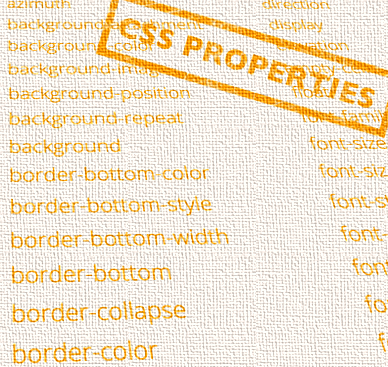HTML Borders
The standard way to create HTML borders is to use CSS. Using CSS, you can create a border around any HTML element.
There are a range of CSS properties that you can use to define borders but the shorthand border property is the most concise way.
Below are some examples of what you can do with HTML, borders, and CSS.
Solid Border
Border Radius
You can use border-radius to create rounded corners.
Bottom Border
You can specify a border on any side of an element using the border-top, border-right, border-bottom, and border-left properties.
There are many other border properties that are even more precise than this, such as the border-bottom-color, border-bottom-style etc.
For a full list of border properties, check out the list of CSS properties and filter by "border".
Dotted Border
Dashed Border
Outset Border
Inset Border
Grooved Border
Double Border
Ridged Border
Mixed Border
You can combine different border types and styles for each side of the HTML element.
Embedded Styles or External Styles?
All of the above examples use embedded styles to create the borders. You can also use external styles to apply the styles across multiple pages or a whole website. To do this, simply copy everything between the style tags and put it into your external style sheet, then replace the style tags with a link tag that points to your external style sheet.
HTML Reference
-

HTML Tutorial
Free HTML tutorial that explains how to code in HTML.
This tutorial explains what HTML elements and attributes are, and how to use them.
I explain the basics, such as what you need in order to write HTML and how to create your first web page.
I then cover other HTML topics including tables, adding color, images, forms, image maps, iframes, meta tags, and more.
I also explain the difference between HTML and CSS (and when to use each one).
Go to HTML Tutorial -

HTML Tags
Full list of all HTML elements.
This is an alphabetical list of HTML elements, linking to a full page of details for each element.
All elements are based on the official HTML5 specification, and include usage notes, full attribute list, as well as links to the various specifications for each element (i.e. HTML4 spec, HTML5 spec, WHATWG spec).
Go to HTML Tags -

CSS Properties
Full list of CSS properties.
Alphabetical list of CSS properties as per the W3C specifications.
CSS stands for Cascading Style Sheets. CSS is the standard way to style web pages.
You can use CSS to set the style for a whole website in one place. CSS allows you to set colors, fonts, widths, heights, margins, padding, and much more.
Go to CSS Properties